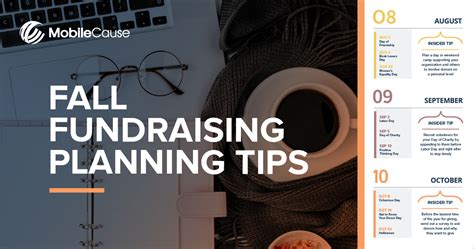The Complete Guide to Fall Fundraiser Planning
Autumn’s crisp air and vibrant foliage provide the perfect backdrop for a successful fundraiser. But planning a fall event requires careful consideration and meticulous organization. This comprehensive guide will walk you through every step, from brainstorming ideas to post-event analysis, ensuring your fall fundraiser is not only profitable but also memorable.
Choosing the Right Fundraiser Type
The success of your fundraiser hinges on selecting the right format. Consider your target audience, your organization's goals, and the resources available. Here are a few popular fall fundraiser ideas:
- Harvest Festival: A classic choice featuring games, food stalls (think apple cider donuts!), crafts, and maybe even a pumpkin carving contest. This appeals to a broad audience and offers many revenue streams.
- Gala Dinner: A more formal event with a sit-down dinner, entertainment, and an auction. This can attract high-value donors and generate significant funds.
- Walk/Run/Bike-a-thon: Capitalize on the beautiful fall scenery by organizing an outdoor event. This encourages community participation and fosters a sense of camaraderie.
- Online Auction: A convenient and cost-effective option, allowing you to reach a wider audience beyond your immediate community.
- Fall Bake Sale/Craft Fair: A simpler approach perfect for smaller organizations, relying on community contributions and volunteer efforts.
Setting Realistic Goals and Budgeting
Before diving into planning, define your fundraising goals. How much money do you aim to raise? Once you have a target figure, create a detailed budget outlining all anticipated expenses: venue rental, marketing materials, food and beverages, entertainment, prizes, and any other relevant costs. Remember to build in a contingency fund to cover unexpected expenses.
What are common expenses associated with fall fundraisers?
This question addresses a common concern for organizers. Common expenses include venue rental (or associated costs if using your own space), marketing and advertising (flyers, social media campaigns, etc.), food and beverages (catering, supplies for a bake sale), entertainment (musicians, DJs, or event-related activities), prizes or giveaways for contests or raffles, permits or licenses required for the event, and any necessary equipment rentals (tables, chairs, sound system). Don't forget staffing costs if you're hiring help.
Marketing and Promotion: Reaching Your Audience
Effective marketing is key to attracting attendees and maximizing donations. Leverage various channels:
- Social Media: Utilize platforms like Facebook, Instagram, and Twitter to create engaging content, share event details, and promote early bird discounts or special offers.
- Email Marketing: Build an email list and send regular updates to keep potential attendees informed.
- Local Media: Reach out to local newspapers, radio stations, and television channels to publicize your event.
- Community Partnerships: Collaborate with local businesses or organizations to cross-promote your fundraiser.
- Website/Landing Page: Create a dedicated page with all the event information, registration details, and donation options.
How can I effectively market a fall fundraiser on a tight budget?
Effective, budget-friendly marketing relies on leveraging free or low-cost options. Prioritize social media marketing (organic reach and targeted ads), utilize free design tools to create visually appealing promotional materials, collaborate with community partners for cross-promotion (reducing advertising costs), and rely on word-of-mouth marketing by encouraging attendees to share information with their networks. Consider offering volunteer opportunities in exchange for free event entry or promotional materials.
Event Logistics and Volunteer Management
Careful planning is crucial for a smooth event flow. This includes:
- Venue Selection: Choose a venue that fits your event's size and theme, considering accessibility and parking.
- Scheduling: Determine the event date and time, considering potential conflicts with other events in your community.
- Volunteer Recruitment: Recruit and train volunteers to assist with various tasks such as registration, food service, and cleanup.
- Supplies and Equipment: Make a comprehensive list of all necessary supplies and equipment, ensuring timely procurement.
How do I effectively manage volunteers for my fall fundraiser?
Effective volunteer management begins with clear communication. Create a detailed volunteer schedule outlining roles, responsibilities, and time commitments. Provide training beforehand to ensure everyone understands their tasks. Use a sign-up sheet or online tool to streamline the volunteer recruitment process. Appreciate their contributions with thank-you notes, small gifts, or recognition at the event. Clear communication and appreciation are key to retaining volunteers for future events.
Post-Event Analysis and Follow-Up
After the event, analyze your results to assess your success and identify areas for improvement. This involves:
- Financial Reconciliation: Calculate your total income and expenses to determine your net profit.
- Feedback Collection: Gather feedback from attendees and volunteers through surveys or informal conversations.
- Thank-You Notes: Send thank-you notes to donors, volunteers, sponsors, and attendees to express your gratitude.
By following these steps, you can plan a successful fall fundraiser that meets your organization's goals and creates a lasting positive impression on your community. Remember, thorough planning and effective communication are the cornerstones of any successful fundraising event.

